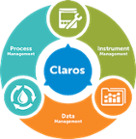-
Products
- Lab Instruments
- Lab Meters and Probes
- Chemistries, Reagents, and Standards
-
Online Analyzers
Ammonium Analysers Ammonia Monochloramine Analyzers Chlorine Analyzers
- CL17sc
- CL10sc Amperometric
- 9184 sc Amperometric
- Ultra Low Range CL17sc Colorimetric Chlorine Analyser
EZ Series Analysers- Iron
- Aluminium
- Manganese
- Phosphate
- Chloride
- Cyanide
- Fluoride
- Sulphate
- Sulphide
- Arsenic
- Chromium
- Copper
- Nickel
- Zinc
- Ammonium
- Total Nitrogen
- Total Phosphorus
- Phenol
- Volatile Fatty Acids
- Alkalinity
- ATP
- Hardness
- Toxicity
- Sample Preconditioning
- Boron
- Colour
- Nitrate
- Nitrite
- Silica
- Hydrogen Peroxide
- Sodium
- EZ Series Reagents
- Flow and Collections
-
Online Sensors and Controllers
pH & ORP Sensors
- 12mm pH/ORP
- 8362 sc High Purity
- Combination pH/ORP
- Differential pH
- Digital Differential ORP
- Digital Differential pH
- LCP ORP
- LCP pH
Conductivity Sensors- 3400 Analogue Contacting
- 3400 Digital Contacting
- 3700 Analogue Inductive
- 3700 Digital Inductive
- 9523 Cation Conductivity
- 9525 DCCP System
- Automated Lab Systems
-
Multiparameter Online Panels
Event Detection and SecurityMulti-Parameter
- Claros Water Intelligence System
- Test Kits & Strips
-
Microbiology
Prepared Media InstrumentsDehydrated Media KitsLabware
- Accessories
- Funnels, Pumps & Manifolds
- Microbiology Filters
- Petri Dishes & Accessories
- Sampling Bags
- Vials, Tubes, Bottles & Racks
-
Lab Equipment and Supply
ApparatusInstrumentsGeneral Lab Consumables Safety EquipmentBooks and Reference Material Glassware/Plasticware
- Samplers
-
Hach eLearning
Lab Product Training Process Product Training
- AN-ISE sc
- Amtax sc
- B3500
- B7000
- CL17sc
- Differential pH Sensor
- Filtrax Sample Filtration Systems
- LDO sc
- Nitratax sc
- Orbisphere 6110
- Phosphax sc
- SC1000
- SC200
- SC4500
- Solitax sc
- TU5300sc/TU5400sc
- Parameters
-
Software Solutions
-
Claros Water Intelligence System
Product Pillars Data Management
- Solutions For:
- Collection
- Visualization & Analytics
- Reporting
- Data Accuracy
Instrument Management- Solutions For:
- Maintenance
- Troubleshooting
- Remote Access
- Lab and Process Comparison
Industry ChallengesClaros News Claros Software Release Notes - Aquatic Informatics
-
Claros Water Intelligence System
- Industries
- Support
- News & Events
Hach Canada
Choose your country or region:
Europe
Americas
Asia - Australasia
- Australia
- Mainland China
- India
- Indonesia
- Japan
- Malaysia
- New Zealand
- Philippines
- Singapore
- South Korea
- Thailand (Thai)
- Taiwan
Middle East - Africa
Municipal Wastewater
Wastewater Treatment Processes – Doing More With Less
Each wastewater treatment plant is unique, with its own capacity, layout, processes, equipment and effluent limits. Every wastewater plant is also faced with rising energy and chemical costs and regulations that are becoming more stringent over time.
We embrace the challenge to continuously improve wastewater monitoring equipment and processes including:
- Nutrient monitoring
- Aeration control
- Nitrification/denitrification
- Sludge dewatering
- Solids handling
- Biological wastewater treatment
- Other plant operations and optimization

Whether in primary, secondary or tertiary wastewater treatment or the promise of a Water Intelligence System such as Claros™, Hach ® innovations and applications can help you stay in compliance and reduce operating costs, doing more with less.
Featured Products
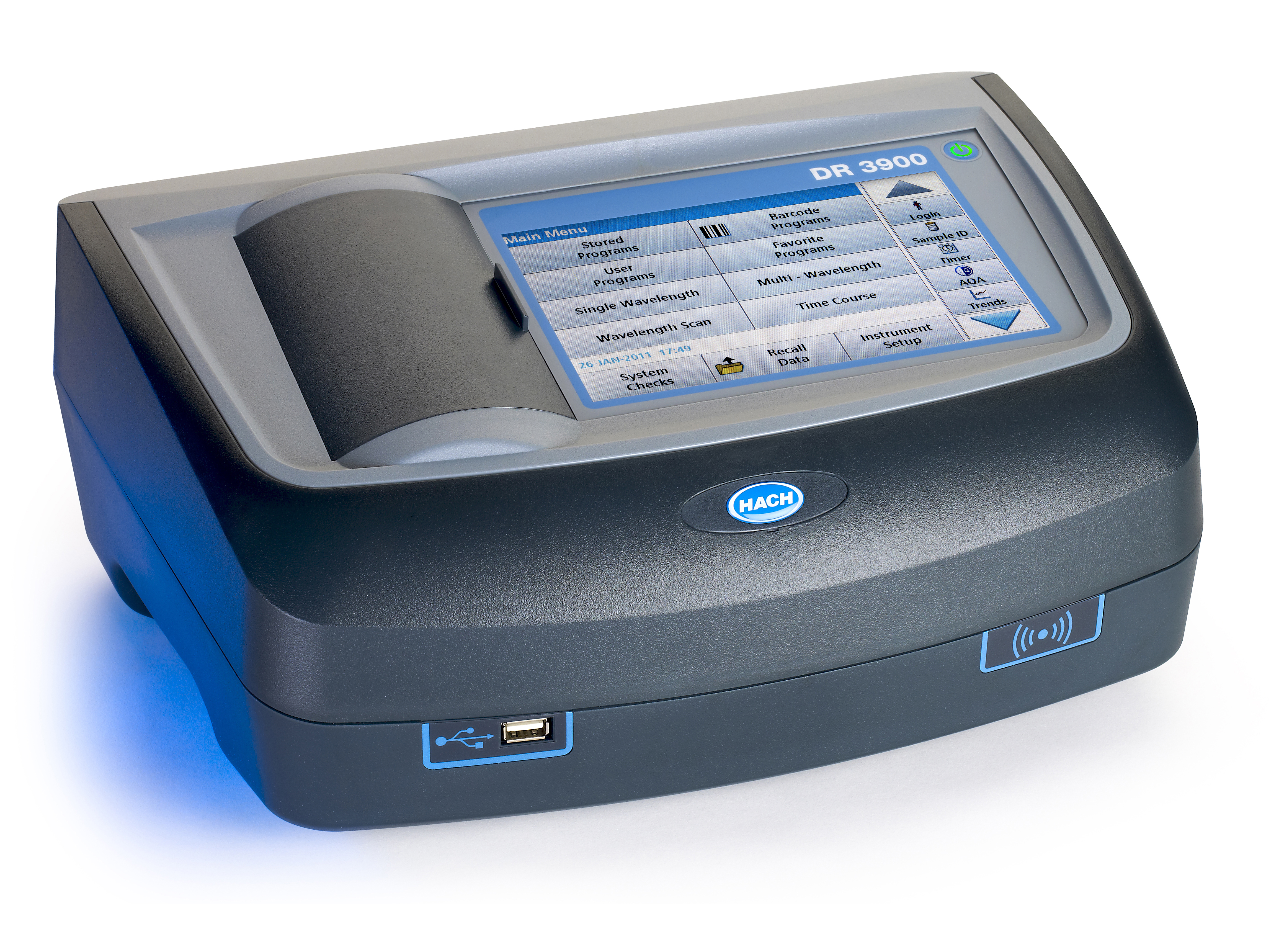
DR3900 Spectrophotometer
The DR3900 is designed to deliver accurate results quickly with Hach's innovative TNTplus® and LCK reagents for fast preparation and easy execution.
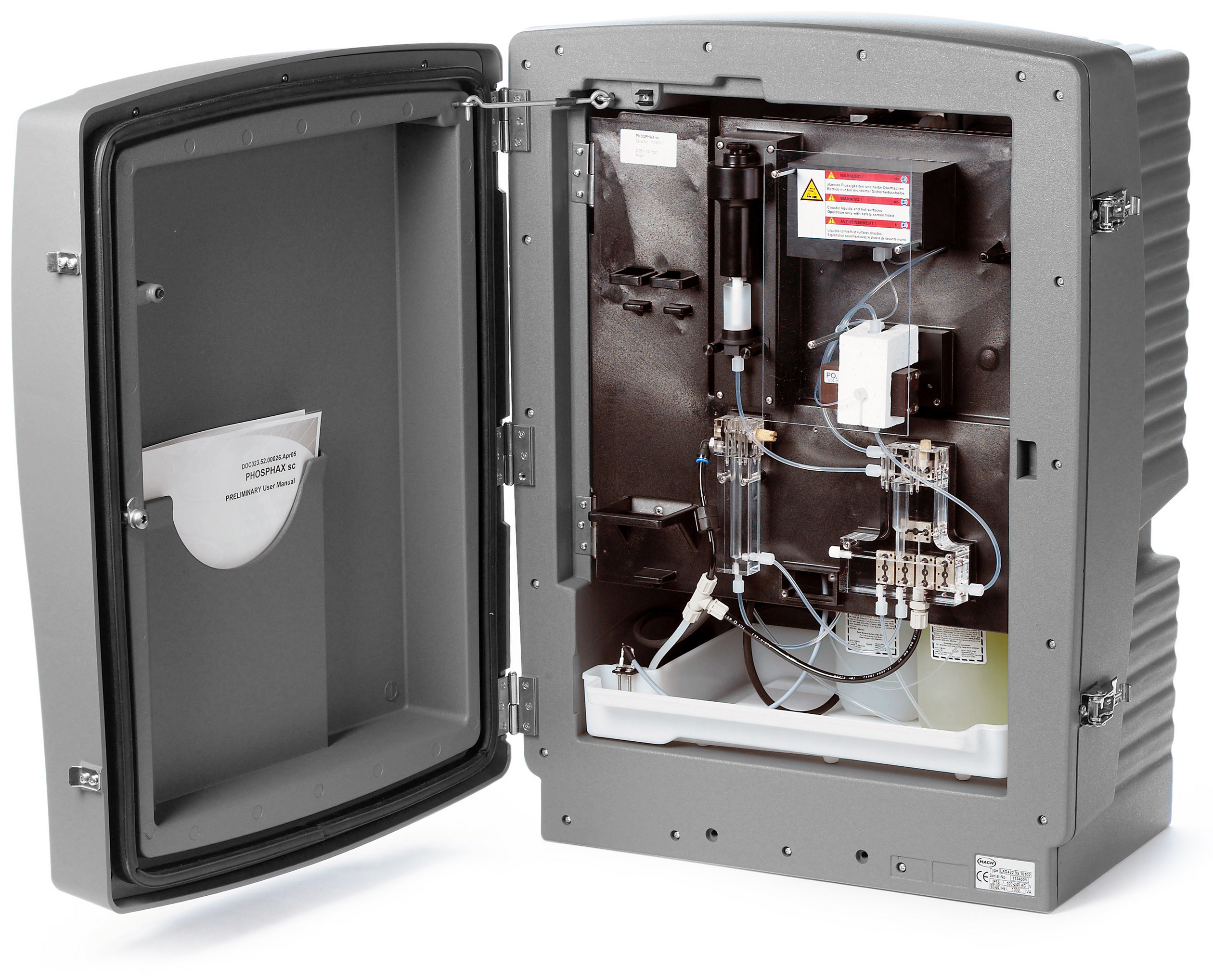
Phosphax Phosphate Analyzers
The Phosphax sc Phosphate Analyzers provides a wide measurement range for a variety of wastewater and drinking water applications.
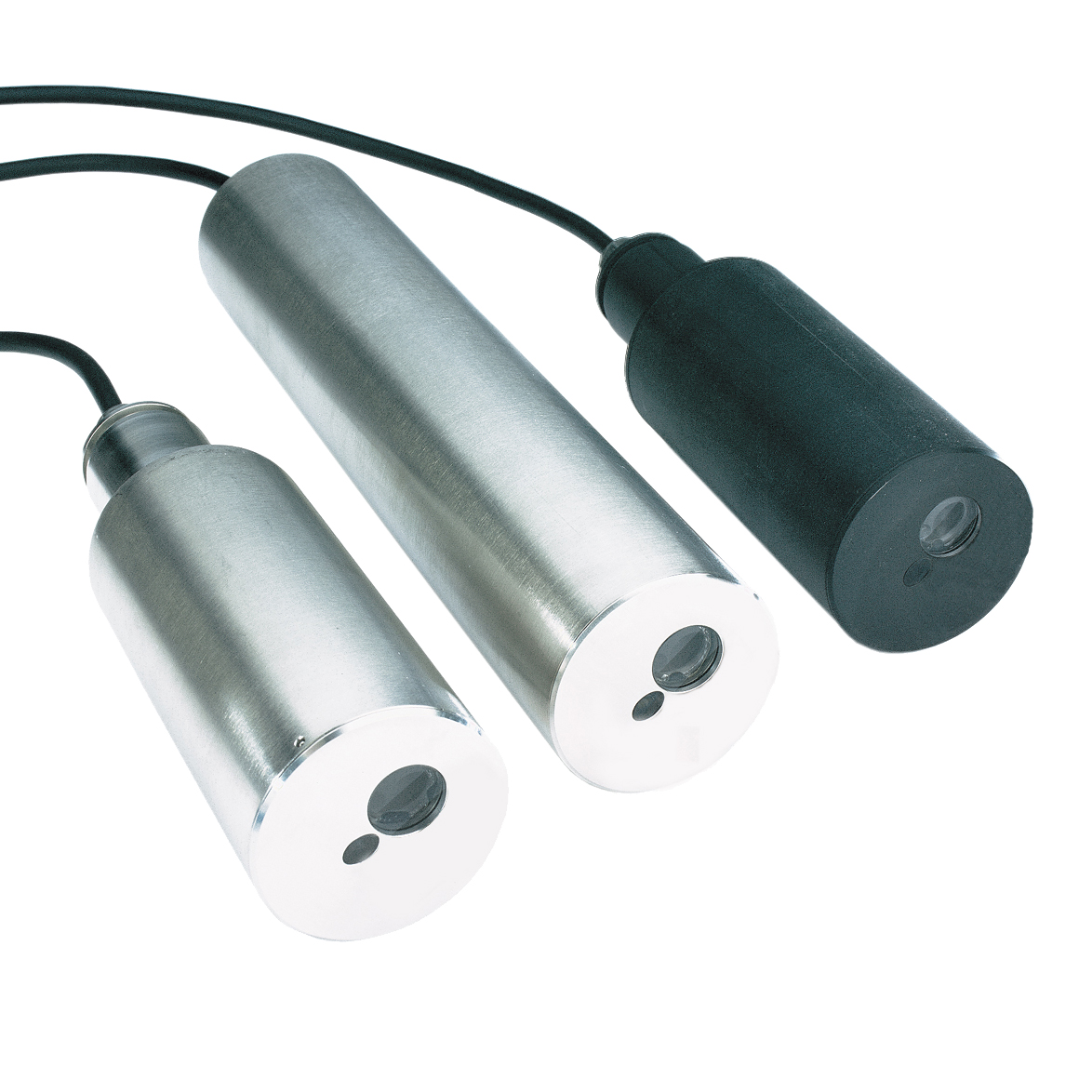
Solitax sc Sensors
The Solitax ts- line sc immersion probes provide accurate, color-independent suspended solids and turbidity measurements. Explore our range of highly accurate and durable TSS sensors.
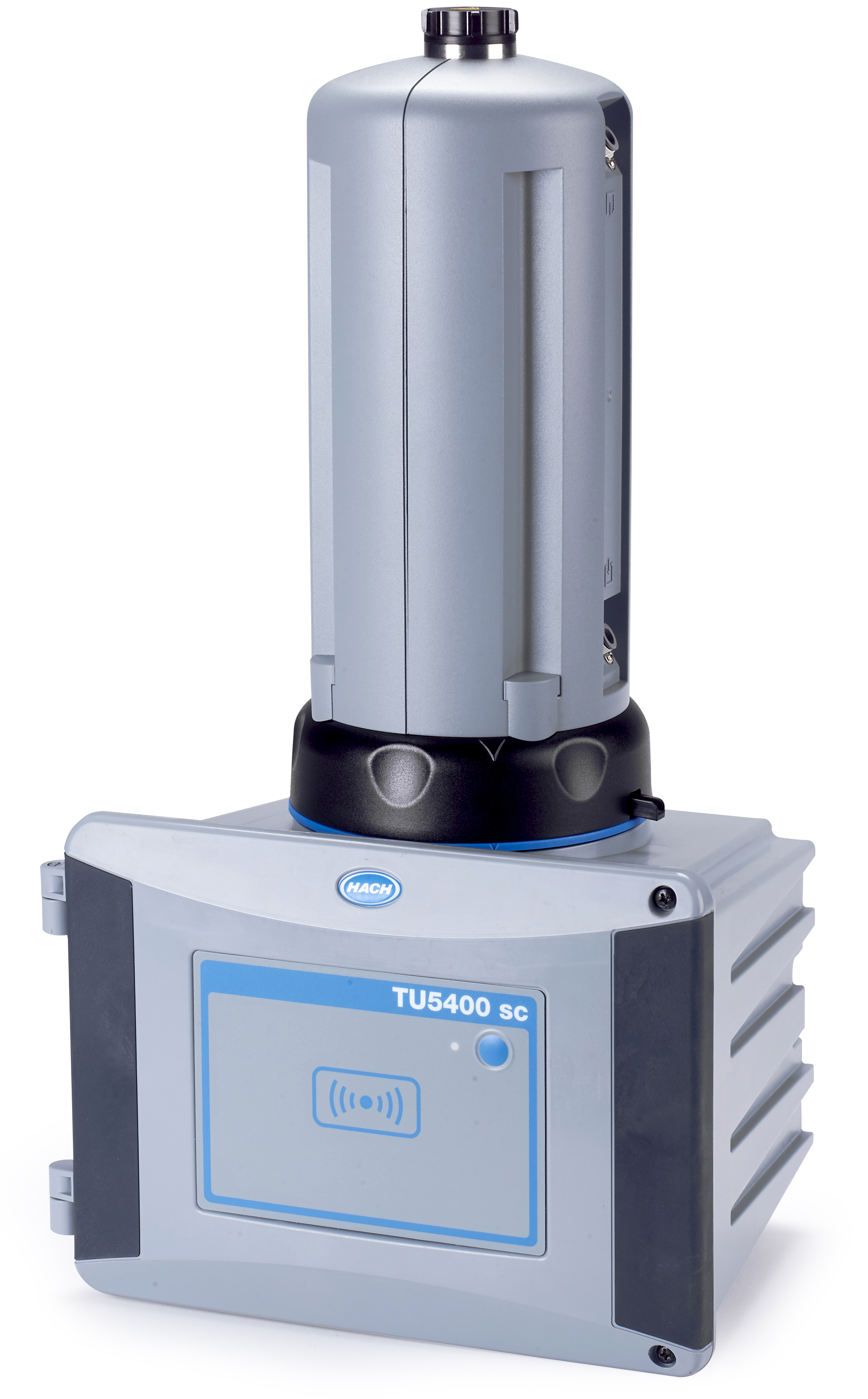
TU5300sc Low Range Laser Turbidimeter
Available with automatic cleaning, the TU5300sc Low Range Laser Turbidimeter dramatically reduces the time needed to get a turbidity measurement you can rely on.
Wastewater Treatment Overview
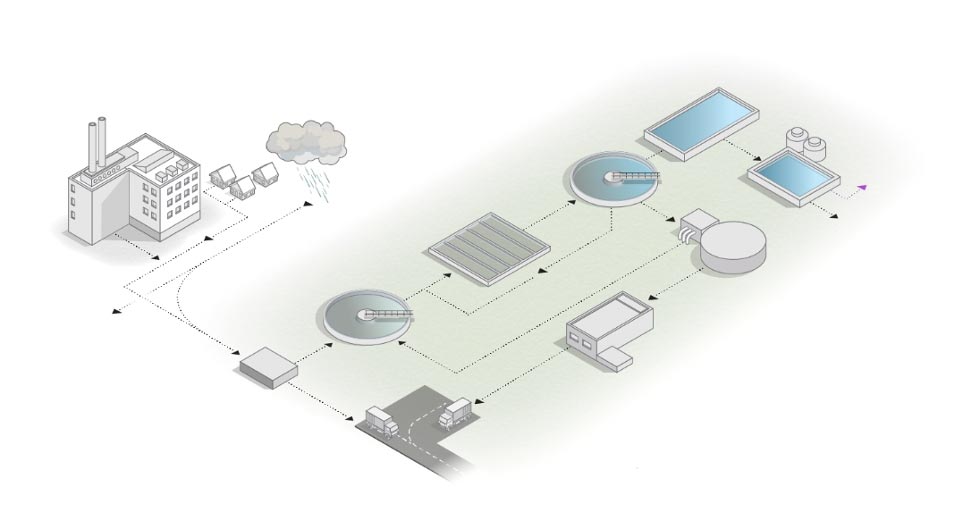
Influent Monitoring
Modern sanitary sewer collections systems move wastewater through a series of pipes from residential buildings, businesses and industrial sites to wastewater treatment facilities for processing and discharge. Some older systems know as combined sewer systems also carry stormwater runoff in addition to the wastewater from residential and commercial sources.
The wastewater flows through underground sewer mains, most often by gravity but sometimes assisted by pumps situated at lift stations. Depending on the topography of an area, these force mains vary in length up to a few miles long. Interceptors are locations where two lines meet and flow into a larger pipe and can include large chambers accessible by manholes.
Interested in Flow Monitoring? Visit our Veralto partner McCrometer.
Preliminary and Primary Treatment
The wastewater treatment process begins by removing large solids and other material during preliminary and primary treatment stages:
Preliminary Treatment
Preliminary treatment is typically the first process within the treatment plant and consists of two categories:
- Screening: This is the process of removing trash, rags and other debris by passing the water through a mechanical screen or rotating drum.
- Gritting: Grit is removed by reducing the velocity of the wastewater, so that heavier inorganic particles like pebbles and sand can settle to the bottom and be removed via gravity.
The grit and screenings are washed and compacted before being collected in a dumpster. These preliminary processes are very important for modern water resource recovery facilities, as grit and debris can irreparably harm downstream processes including primary clarifier mechanisms, aeration diffusers and membranes
Customer Challenges
Influent Management
Help Optimize Process Settings
Parameters
Influent to Primary Clarifier (Post-Screen)
Help Optimize Process Settings
Parameters
Primary Clarifier Effluent
Optimize/Adapt/ Help Treatment Settings
Parameters
Secondary Treatment
Secondary treatment removes the soluble organic matter, nutrients such as nitrogen and phosphorus and most of the suspended solids that escape primary treatment.
Biological Secondary Treatment Processes
Most often, biological processes are used in which microbes metabolize organic compounds and nutrients to grow and reproduce. There are two common biological secondary treatment processes:
- Suspended growth systems
- Attached growth systems
Suspended Growth Systems
A suspended growth process fosters the growth of suspended microorganism flocs from individual organisms already present in the wastewater and in the return activated sludge.
The flocs contain organisms that can remove the pollutants through aerobic, anoxic and anaerobic environments. Once the pollutants are removed, the flocs are sent to a secondary clarification process where they separate from the water via gravity. A portion of sludge in the bottom of the secondary clarifier is then directed back upstream to blend with the primary effluent (Return Activated Sludge) to create mixed liquor. The remainder of the sludge is removed from the process (Waste Activated Sludge) to create the ideal ecology of microorganisms.
Attached Growth Systems
Attached growth systems rely on the microorganisms to attach to a media and create a biofilm. The settled sewage is either mixed or sprinkled over the biofilm coated media where the microorganisms remove the pollutants. Like the suspended growth process, biofilm fragments and suspended flocs are sent to a secondary clarifier for separation where sludge is recycled and wasted and clean water is discharged to the next process.
Organisms Require Nutrients in a Balanced Ratio
For biological treatment to function efficiently, organisms require nutrients in a balanced ratio, including:
- Carbon
- Nitrogen
- Phosphorus (referenced as C:N:P)
Additionally, the following elements are typically present in wastewater:
- Iron
- Copper
- Zinc
- Nickel
- Manganese
- Potassium
- Sulfur
The commonly accepted C:N:P Ratio is 100:5:1, although some facilities thrive outside of this ratio, while others experience polysaccharide slime formation or filamentous bacteria growth that inhibit the biology and settling in the secondary clarifier.
Multiple biological processes can be employed to complete secondary treatment. These processes include:
- Plug flow aeration basins
- Complete mix aeration tanks
- Sequencing batch reactors
- Oxidation ditches
- Trickling filters
- Moving bed biological reactors
- Integrated fixed film activated sludge
Biological Nutrient Removal (BNR)
Biological Nutrient Removal (BNR) alters the environment of the microorganisms to remove nitrogen and phosphorus from the water. A BNR process consists of anaerobic (no oxygen or nitrate), anoxic (no oxygen, nitrate is present) and aerobic (oxygen present) stages, during which the water is moved through a series of chambers to perform various biological functions.
Chemical treatment processes can also be used, such as the chemical removal of phosphorus. By introducing a chemical precipitant within the aeration basin and clarifiers, phosphorus is removed by flocculation, binding into insoluble compounds that settle out and can be removed as sludge.
Customer Challenges
Nitrification Process
- Aeration is typically the most energy consuming process in a wastewater facility
- Understanding Influent Nitrogen load changes is key to optimizing nitrification and treatment costs
- Maintaining an optimal environment (alkalinity, SRT, pH, etc.) is essential for stable microbiology and efficient removal of nutrients
Denitrification Process
- Bacteria need carbon to reduce nitrate to nitrogen gas. If external carbon sources are required (ex. Methanol, Ethanol etc.), managing chemical usage as conditions change will reduce costs and prevent under or overdosing
- Maintaining anoxic conditions (no soluble oxygen) is important
- Improper Internal Mixed Liquor Recycle rates can reduce denitrification and cause downstream challenges
Side stream Management
- High nutrient loads from dewatering/thickening processes and decanting of digesters
- if not managed appropriately lead to problems that upset processes and can increase effluent Nitrogen concentration
- Short- cut nitrogen removal processes (i.e. Annamox, Demon,)
Parameters
- Ammonia
- Alkalinity
- Dissolved Oxygen (DO))
- Nitrate (NO3)
- Nitrite (NO2)
- ORP
- pH
- Temperature
- Total Suspended Solids
Phosphorus Management
Chemical removal of Phosphorus
- Optimal levels of chemical dosing (ex. metal salts i.e. Ferric, Alum) are necessary to manage costs
- Understanding Influent Nitrogen load changes is key to optimizing nitrification and treatment costs
- Maintaining an optimal environment (alkalinity, SRT, pH, etc.) is essential for stable microbiology and efficient removal of nutrients
Denitrification Process
- Bacteria need carbon to reduce nitrate to nitrogen gas. If external carbon sources are required (ex. Methanol, Ethanol etc.), managing chemical usage as conditions change will reduce costs and prevent under or overdosing
- Underdosing leads to possible permit compliance issues; Overdosing leads to increased costs and possible UV system degradation
Biological removal of Phosphorus:
- Maintaining anaerobic conditions (No oxygen, no NO3, no NO2); to ensure maximum phosphorus release
- Maintaining aerobic conditions to ensure maximum phosphorus uptake
- P- release in downstream process (secondary clarification, digestion, etc.)
Side stream Management
- High loadings from dewatering/thickening process and decanting of digesters
- If not managed appropriately lead to problems that upset process, compliance in regards to Phosphorus
- Increase in chemical expenses if not treated properly
Parameters
- Dissolved Oxygen (DO)
- Nitrate (NO3)
- Ortho P
- ORP
- Total P
- Volatile Fatty Acids (VFA)
Organic Management
Managing Energy Costs
Over aeration impacts downstream processes; Unexpected organic slug loads
Secondary Clarification
Mixed Liquor Suspended Solids (MLSS)
Once a day grab sample offers an incomplete picture of the process: Inaccurate visibility to daily concentrations leads to confusion about current process conditions, introduces error and lag time for process control, grab samples may not be representative, lab test may have been improperly performed, and inconsistency between operators and or shifts
Parameters
- Suspended Solid (SS)
- Sludge Level
Tertiary Treatment
In tertiary treatment, techniques such as filtration, disinfection, carbon absorption and other processes are used to remove the remaining organic load, suspended or dissolved solids, pathogens and heavy metals that pass through other treatment processes.
Also called effluent polishing, tertiary treatment raises the effluent quality to the level suitable to its intended use, whether for discharge into lakes, rivers, oceans, reuse as non- crop irrigation (parks, golf courses, greenways, etc.), groundwater recharge or in certain cases, as influent to drinking water plants.
Wastewater plant effluent must be monitored to ensure compliance with effluent permit limits, which vary based on jurisdiction and country.
Chemical Dosing
Chemical Dosing
- Adequately dosing of the chemical prior to filtration. Inefficient dosing could lead to higher costs, possible clogging of the filter, and compliance issues
- Chemicals could be a coagulant and/or a flocculant
Filtration
- Filter fouling and appropriate backwash and cleaning cycles are important to monitor to optimize costs in energy consumption and ensure efficient SS removal
- Filter breakthrough may increase TSS even higher than inlet (drum filter, cloth filters, sand filter)
Settling
- Utilize chemicals and the challenge is to dose in relation to the pollution
- Instead of filtration settling is utilized; clogging is not an issue, however sludge level must be monitored
Parameters
- Phosphate
- Total Phosphorus
- pH
- Suspended Solids (SS)
- Turbidity
Polish the Effluent for Micropollutants
Ozonation
- Adequate dosing of the ozone (inefficiency leads to high costs)
- Meeting compliance for micropollutants and elimination rate
- Monitoring energy consumption
- Nitrite leads to higher ozone consumption
Powdered Activated Carbon
- The loss of activated carbon in the effluent
- Higher sludge production if you use activated carbon
- Meeting compliance for micropollutants and elimination rate
- Need to identify when to reactivate carbon
Granular Activated Carbon
- Filter fouling and appropriate backwash and cleaning cycles are important to monitor to optimize costs in energy consumption and ensure efficient MS (micropollutants) removal
- Need to identify when to reactivate carbon (if not monitored can become saturated and will not absorb micropollutants anymore)
Parameters
- SAC254
- Total Organic Carbon (TOC)
- Nitrite
- Chemical Oxygen Demand (COD)
- Suspended Solids (SS)
- Sludge Level
- Ozone
- Turbidity
Sludge & Solids Management
The method for handling the sludge removed from the process depends on the volume of solids as well as other site-specific conditions. Aerobic digestion is often used by facilities less than eight million gallons per day of inflow. Waste Activated Sludge and if present, Primary Sludge, are added to an aerated reactor where microorganisms feast on the organics and microorganisms present in the sludge to reduce the volatile solids content and the overall mass of sludge.
Anaerobic digestion is typically used at facilities greater than eight million gallons per day of inflow and involves the use of sealed reactors to create an anaerobic environment for different organisms to feast on the organics and microorganisms in the sludge through the processes of acidogenesis and methanogenesis. The methane formed by anaerobic digestion can be used to fuel boilers to heat the digester, flared, or cleaned and repurposed as a green energy source.
Thickening involves concentrating the sludge by removing a percentage of the liquid portion by adding polymer compounds, and is often employed before anaerobic digestion. Dewatering with belt presses, centrifuges or other means further concentrates sludge into a cake. The cake can be further dried, or simply disposed through land application or landfills.
Customer Challenges
Secondary Treatment Stage
Sludge Blanket Management: Primary/ Secondary Clarifiers and Gravity Thickeners
- Primary Clarifier and Gravity Thickener: High sludge blankets can become too dense to pump. If the blanket is too low watery sludge can cause issues with other processes
- Secondary Clarifier: High blanket levels can lead to increased and unwanted solids and turbidity in effluent. Unwanted secondary clarifier denitrification and phosphorus release can occur from high blankets
Return Activated Sludge and Waste Activated Sludge
- Return Activated Sludge (RAS): High return rates can lead to higher electrical consumption due to excess pumping. High return rates can affect wasting efficiency.
- Waste Activated Sludge (WAS): Understanding the solids concentration of WAS is key to managing a proper Solids Retention Time (SRT)
Mixed Liquor Suspended Solids (MLSS)
Once a day grab sample offers an incomplete picture of the process: Inaccurate visibility to daily concentrations leads to confusion about current process conditions, introduces error and lag time for process control, grab samples may not be representative, lab test may have been improperly performed, and inconsistency between operators and or shifts.
Secondary Treatment Stage
Understanding sludge age, seasonal, and diurnal changes for effective treatment
- Inaccurate/incorrect SRT steals treatment capacity which can lead to compliance issues – BOD, Ammonia, Phosphorus, Total Nitrogen
- Inaccurate/incorrect SRT can lead to filamentous bacteria concerns: Filaments can create bulking and foaming issues. When chlorine is used for controlling overgrowth it also inhibits good bacterial composition.
Digestion
Efficiency of the Anaerobic Digester
Understanding the digester acid to alkalinity (VFA/ALK) ratio is key to optimize anaerobic digestion. Operating in the proper range will keep a digester stable and can help optimize biogas production.
Parameters
- pH
- Total Alkalinity
- Suspended Solids (SS)
- Volatile Fatty Acids (VFA)
Thickening & Dewatering
Thickening: Optimize Feed stock of the Digester
- Sludge with excess water can lead to a short hydraulic retention time in the digester which reduces digester stability and biogas production.
- Thickening and Dewatering: Costs of Operations
- Low sludge cake dryness (% solids) can lead to higher sludge disposal and hauling costs.
- Un- optimized polymer dosing and system settings leads to higher operation costs.
Effluent and reuse
While effluent from wastewater treatment facilities is commonly discharged to the environment in rivers, oceans, or other bodies of water, there are a variety of other options for discharge. These include:
- agricultural irrigation
- use in parks and recreational facilities (golf courses and sports field irrigation, snow making)
- wildlife habitat or aquifer/wetland/marsh recharging
- industrial uses such as process water
- street cleaning
- direct potable reuse where water is sent to a drinking water plant for further treatment.
Customer Challenges
Effluent Regulatory Compliance
Compliance Testing
These samples are required by regulation to protect human health and the environment.
Parameters
- BOD
- COD
- Ecoli
- Total Nitrogen
- pH
- Suspended Solids (SS)
- Temperature
- Total Phosphorus/ Orthophosphate
- Total Coliforms
Effluent Monitoring
Visibility
To give a complete picture of diurnal, seasonal, and changing conditions.
Visibility allows for optimization and increased process efficiency.
Parameters
- Ammonium
- Dissolved Oxygen (DO)
- Chemical Oxygen Demand (COD)
- TOC
- Total Nitrogen
- Total Phosphorus/ Orthophosphate
- Nitrate
- Nitrite
- pH
- Suspended Solids (SS)
- SAC254 Spectral Absorption Coefficient 254
- Temperature
Reuse
Reuse Regulation (potable and non-potable)
Additional measurements and regulation on reuse effluent depending on the how the water intends to be used.
Parameters
- Ammonium
- Chemical Oxygen Demand (COD)
- Chlorine
- Mono Chloramine
- Nitrate
- Nitrite
- pH
- Suspended Solids (SS)
- Temperature
- Total Organic Carbon (TOC)
- Total Nitrogen
- Total Phosphorus/ Orthophosphate
- UV254
- Turbidity
Disinfection
Resource Waste
- Overdose chemicals
- Energy use
- Maintenance labor
Operational Challenges
- Influent Variability
- Disinfectant demand will change (reacting to pathogens, organics, ammonia levels)
- Chemical Control can be difficult
- Temperature Fluctuations and reaction rate alter contact time
- Accuracy of Online Measurements
Treatment Plant Compliance
- Potential pathogen release or chlorine violation fines
- Limiting or completely shutting down your facility due to a serious violation
Parameters
- Free Chlorine
- Total Chlorine
- Monochloramine
- pH
- Temperature
- Flow
- Transmittance
- Ecoli
- Total Coliforms
- Turbidity
- Solids
- Total Suspended Solids (TSS)
Water Intelligence
A growing field of expertise within the wastewater treatment industry, Water Intelligence Systems use digital technologies, advanced sensors, controllers, and algorithms to allow plant operators to increase efficiencies leading to overall cost savings in running the plant.
Claros TM , the Water Intelligence System from Hach, integrates all plant data sources, including system data, device data, and manually-collected data, driving decisions to maximize efficiency and cost savings.
With these systems, data on flow rate, water composition, dissolved- oxygen, nutrient levels, and other factors are more easily tracked and verified. This leads to more responsive treatment options, automation capabilities, and data visualization and report generation. Using data- driven insights into water quality, flow rate, and other factors, operators can reduce overtreatment (chemicals as well as aeration blower run time) while knowing their plant will remain within compliance limits.
As regulations become more stringent and plants need to find cost- savings, Water Intelligence Systems such as Claros will become more important and widely adopted. And with the Hach’s growing suite of Claros- Enabled sensors, controllers, devices, Process Management systems , and lab equipment, operators can configure a system that fits the unique requirements of any plant.
Interested in learning more?
Regulations
Regulations and permit limits vary from region to region and country to country. Generally, target limits are established by the acting authority, and plants measure and report to demonstrate compliance with established limits. In this way, important parameters that indicate water quality and environmental and health standards are monitored and maintained, ensuring the continued health and safety of the populations being served.
For information regarding regulations in the US: https://www.epa.gov/npdes
For information regarding regulations in the EU: https://www.eea.europa.eu/themes/water/european-waters/water-management
Effluent and reuse
Although effuents from sewage treatment facilities ar commonly discharged into the environment, into rivers, oceans or other water bodies, there are several other options for their disposal. These options include, but are not limited to, agricultural irration, use in parks and recreational facilities (irrigation of golf courses and sports fields, snowmaking), wildlife habitat, or recharge of aquifers, wetlands and swapms, industral uses such as process water, street cleaning or the reuse of potable water when it is returned to a plant for futher treatment.
Need More Info?
Want to talk to a Hach expert about trusted, reliable Hach solutions?
Let us know - we're here to help.






